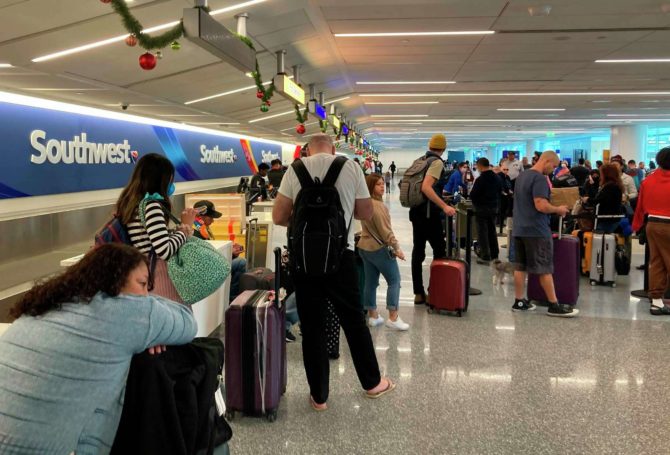
Postponed Investment Leads to Potentially Damaged Brand Value
Crisis planning focuses on crisis scenarios and crisis response. Well-executed crisis planning also identifies affirmative actions to lower risk and avoid crisis. It’s a lesson Southwest Airlines is learning the hard way – and proving the point.
The airline’s implosion over the Christmas holiday cancelled 16,000 flights, leaving thousands of passengers stranded and lighting up social media. The airline’s public communications were optimistic while internally conceding its antiquated scheduling software left planes and crews out of position.
CEO Bob Jordan referred publicly to a “rolling struggle” and a “giant puzzle”, but was more direct in explaining what went wrong to internal audiences. “Part of what we’re suffering is a lack of tools. We’ve talked an awful lot about modernizing the operation, and the need to do that. And crew scheduling is one of the places that we need to invest in.”
The airline reportedly lost $852 million in the meltdown, but the deeper loss could be in its brand value estimated at nearly $5 billion.
The episode should become a textbook example of how a clumsy crisis response can make a bad situation worse. The textbook example also should include the folly of failing to remedy chronic problems such as outdated scheduling software that can supercharge a crisis.
Severe weather is a known cause of crisis for airlines. Improved weather forecasting provides a heads up to conditions that will interrupt air service. That’s valuable time to warn and reschedule passengers with tickets on flights likely to be impacted and bolster staff to handle frustrated calls from stranded passengers.
Increasingly intense storms and heat waves are making airline service interruptions more frequent. It would seem obvious to invest in technology to cope with those interruptions in the spirit that the best crisis response is avoiding a crisis. Stranded passengers in the Christmas storm were inevitable. Stranded pilots and planes not so inevitable.
Crisis communication plans are essential to airlines, and for most organizations, regardless whether they are for-profit or nonprofit. No competent crisis communication plan for an airline would omit a crisis scenario centered on bad weather. The same is true for risks and vulnerabilities that can be mitigated to reduce the severity or even avoid a crisis scenario.
In a world full of surprises, a crisis plan is essential to anticipate and prepare for surprises. In many ways, a well-done crisis plan is as or more valuable than a strategic plan. A failed crisis response can trump a strategic plan by undermining a reputation.
The Southwest Airline fiasco is unfortunately not an isolated example. Far too many organizations haven’t take the time to develop a crisis plan or review a plan that has been collecting dust on a shelf for a long time. A crisis plan should be a priority, not an afterthought.
If motivation is needed, crisis plans are the best investment in reputational preservation – a lesson Southwest Airlines may now understand.
Crisis plans, with operational and communication sections, should be living documents in recognition that change is constant and often substantial. Timely reviews can result in significant updates and additions. Periodic crisis exercises can expose flaws or oversights in a plan, as well as cement teamwork that is critical in crisis situations. The process of thinking about potential crisis scenarios is a critical step to addressing them successfully.
If motivation is needed, crisis plans are the best investment in reputational preservation – a lesson Southwest Airlines may now understand. Crisis plans help chart crisis response. They also identify actions to minimize or avoid a crisis. If a crisis planning process points to no-brainer investments, executives have nobody to blame but themselves if they don’t make them.
“The tools we use to recover from disruption serve us well 99 percent of the time,” Jordan said after the meltdown. “But clearly, we need to double down on our already existing plans to upgrade systems for these extreme circumstances so that we never again face what’s happening right now.”
The irony of dismissing crisis planning because of cost and staff time is the high cost of rehabilitating a damaged reputation and the ultimate risk of a “brand beyond repair”.




